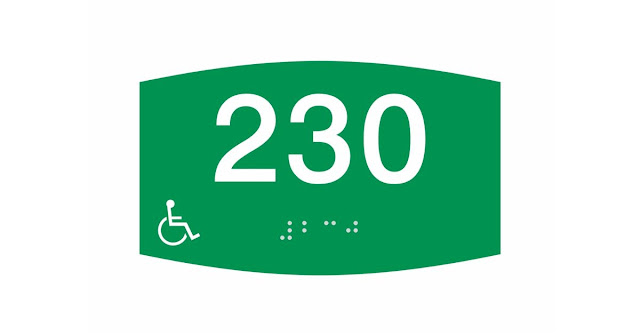The Importance of Braille Signs in Recreational Spaces
Creating spaces where everyone feels welcome is more than just a trend—it’s a necessity. Recreational spaces, like parks, museums, and sports facilities, play a crucial role in our communities, offering spaces for enjoyment and relaxation. However, for these spaces to truly serve everyone, they must include braille signage to ensure accessibility for visitors with visual impairments. In this post, we’ll explore the significance of braille signs and why they are vital for recreational venues.
Ensuring Inclusivity for All
Inclusion should be at the heart of any community space, as it fosters a sense of belonging for everyone. By integrating braille signs throughout recreational areas, you can better accommodate people with visual impairments, enabling them to independently explore and enjoy their surroundings without hesitation or fear.
Imagine the experience of trying to figure out which room you need to go to for a class you signed up for, but none of the rooms have signs identifying them—this would quickly lead to feelings of frustration and exclusion. This is how people with visual impairments feel when there aren’t any room number signs with braille in place. This type of signage not only transforms these environments into accessible spaces but also provides essential directions, detailed descriptions, and critical information that empower individuals with visual impairments to actively participate in leisure activities.
The Cost of Inaccessibility
When recreational spaces lack adequate accessibility measures, leading to the exclusion of groups of potential visitors, you’ll start to notice a decline in regular participants. While many recreational centers aren’t financially focused, this decline will still cause financial issues since the money you put into projects and events will go to waste if no one shows up.
To make matters worse, in a world that increasingly values diversity and inclusion, failing to accommodate all individuals can paint an organization in a negative light, leading to a further decline in active members. If too few people use these recreational facilities, the threat of getting shut down will drastically increase.
Legal Requirements
The final reason why braille signs in recreational spaces are important is that there are regulations that mandate the inclusion of these signs in public places. These legal requirements stem from a growing recognition of the importance of accessibility, ensuring that all individuals, regardless of their abilities, have equal access to public areas. Governments have established these laws to promote inclusivity and protect the rights of individuals with disabilities.
By complying with these regulations, recreational venues not only avoid potential legal issues but also demonstrate their commitment to creating a welcoming and inclusive environment for all visitors. Going beyond compliance, organizations can also take proactive measures to incorporate additional accessibility features, further enriching the experience for everyone and setting an example for others in the community.





Comments
Post a Comment